"It was a big challenge since we had limited FX experience": How we made VES Award winner Silhouette
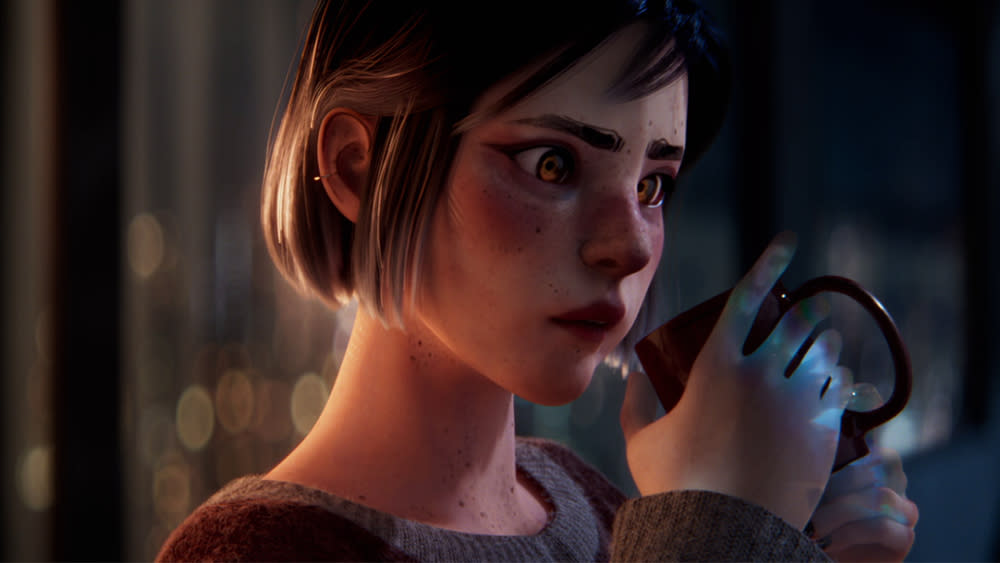
The Creator and The Last of Us scooped many of the biggest accolades for visual effects at the 22nd annual VES Awards, but we're always particularly intrigued by the student award. This year, the Autodesk-sponsored recognition of outstanding visual effects in a student project went to the team behind Silhouette, a short film about a woman who fades away as a result of loneliness in a futuristic metropolis.
Silhouette was produced by a talented team filmmakers from ArtFX School of Digital Arts in France comprising Alexis Lafuente, Antoni Nicolaï, Chloé Stricher, Elliot Dreuille, Baptiste Gueusquin and Marc Forest. As part of our How we made series, we asked them about their inspiration and the process they used for a beautifully executed project that captures lonely desolation on rainy city streets.
Where did the idea come from for Silhouette and what inspired the film?
"We liked the graphic representations of a body that embodies a concept or a person's state of mind. We also wanted a story that connects deeply with the viewer and communicates feelings that everyone can relate to. That's how Alexis came up with the idea of a lonely girl whose body becomes invisible because she feels alone and ignored in an ultra-connected city. Silhouette is a fairly straightforward story, with a relatable main character and a supernatural twist."
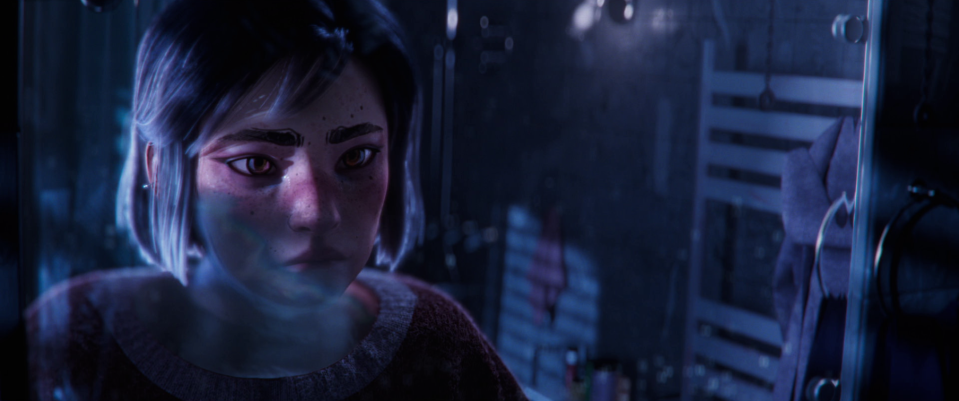
How would you describe the style and art direction of the film?
"The style of the film is a blend of stylized hand painted 2D textures and a realistic lookdev, so we would say it’s a hybrid style. We mainly drew our inspirations from the work of Alberto Mielgo: his short film the Windshield Wiper, and the episode ‘The Witness’ from the series Love, Death and Robots.
"This hybrid style allowed us to stay in a workflow we were already comfortable in (realistic 3D) while exploring new techniques: hand painted textures, matte painting, painted texture maps. We had a lot of fun creating our own artistic direction."
How did you achieve the subtlety in the camerawork that made it feel realistic?
"As we wanted a relatable story and character, the staging of the film had to reflect this. One crucial element we wanted was to have a camera that felt real and present in the world of our story: as if someone was standing next to our main character and recording her with a camera over their shoulder.
"The animation team animated all the camera, this way the animation is thought with the shot in mind and the shot is made with the animation in mind. Finally, the cherry on top was that we built a custom camera rig that uses camera tracking data to get a life like camera shake, the animators were then able to animate, mix and blend between the different shaking profiles and intensities based on their intentions."
What design ideas went into creating the characters?
"The design of our main character had to be linked to her quest and what she represents. We wanted her to look like somebody you could meet in the metro. She had to be quite skinny and have a big leather coat to contrast with her slender legs. Imagine a turtle: that big coat might seem oversized and act as a shell; something too heavy, but which she can use to pretend to be confident and create a boundary with those around her."
What tools were used?
"We used Autodesk Maya during a good chunk of the process. Maya’s modeling tools were used for most of the props, but we especially used it for the rigging and animation. A crucial part of the rigging workflow involved a Maya plug-in called mGear, an open source project started by Jérémie Passerin and continued by Miquel Campos. It really helped improved our rigging workflows."
How did you balance the blend of realism and stylisation in the film?
"Firstly, we worked with a realistic lookdev approach: Chloé and Elliot spent some time painting graphic textures in Photoshop and substance painter for the diffuse and roughness maps of each asset. Then for the stylized environment, Marc’s matte paintings were used to create a base and the environment artist built 3d models on top of that, while keeping the painting as a texture projection. That way we had a 3-dimensional city while having a hand painted look.
"For every aspect and shot, we would ask that question of how we would blend the two approaches to achieve something we liked. In all honesty, we experimented and saw if it worked while doing it. We didn't have any clear guide, so we experimented until the result was pleasant to us. Sometimes the solutions lied in 2D, sometimes in 3D, sometimes both."
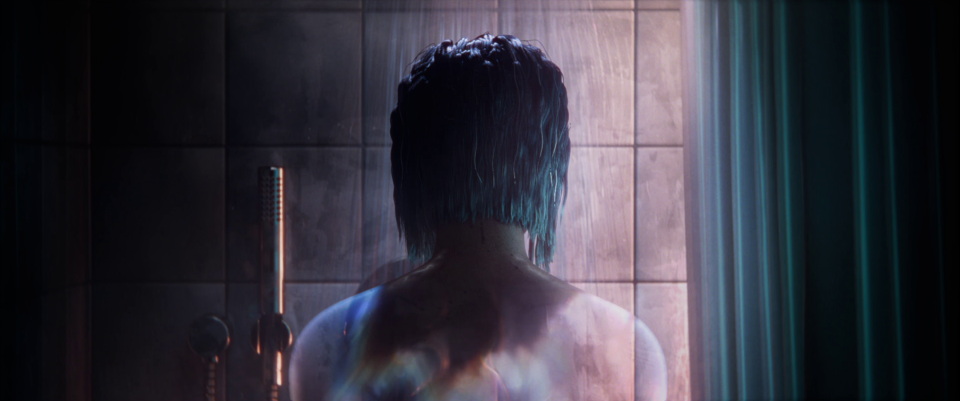
How much of a challenge was the water and rain?
"It was a big challenge for us since we had very limited FX experience. Baptiste did a few experiments early on to make sure we could afford to put the rain in the story. We were happy with the results, so we kept it!
"At the time it was a fully interactive simulated rain but later on, when we needed to speed up production, we cheated most of it: The droplets are not motion blurred, they are cached curves that we reused for most of the shots and the splashes on the ground are just a procedural animation. To do things efficiently, when we needed actual water flowing down on our character’s face, we would only project a stock video on the UVs in comp."
How long did it take to decide on the look and style of the transparent effect, and how was it done?
"It took us a few months. Marc drew concepts, and then Baptiste tried to find in both Houdini and Nuke a look that we would like. It took a few tries, but we were super happy with how it turned out. We wanted to avoid the 80s predator invisibility look; we wanted to have something a bit more magical and less sci-fi.
"In the end, Baptiste made an effect that was mostly made in comp (we only generated a few simple masks in 3D), allowing us to render and iterate quickly on the look for each shot."
How did you create the crowds and why did you take this approach?
"We knew very early on that we would have to represent a huge crowd in our movie. Doing this in 3D is generally a challenge and was out of question for our small team. It quickly seemed very logical and entirely in line with the theme of our film to do it in 2D: our character feels so disconnected that the representation of the other people around her is altered, she is in 3D while the crowd is in 2D.
"To bring the crowd to life, we recorded sequences of people walking on green screens from different angles, then painting a single frame which was then interpolated using EBSynth saving us a ton of time as we didn’t need to animate each frame of animation. We then used AI to generate animated normal maps and motion capture data to get accurate lighting interactions between the silhouettes and the 3D environment."
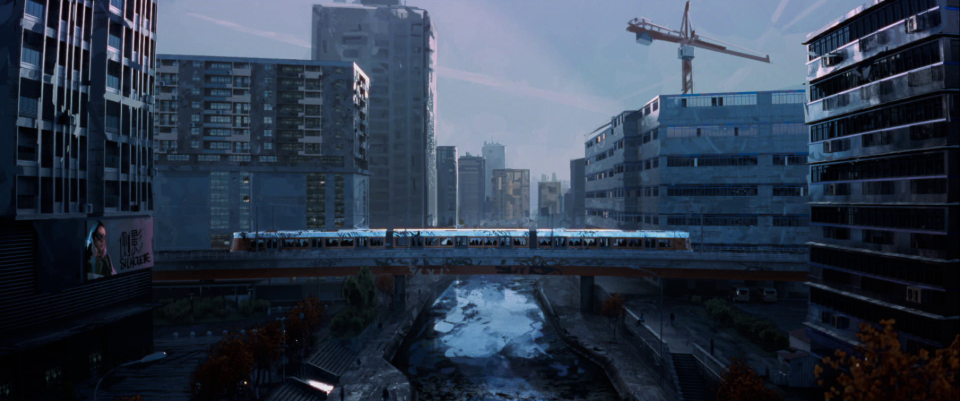
Is AI something VFX and animation artists should make use of?
"Definitely. Tools are just tools; they create what the creative mind holding them wants to. Are we happy to have new tools to create awesome projects? Of course! There are tons of AI tools which could make an artist's job easier by resolving specific technical problems: Gaussian splat, Mocap, Render denoising, BG removal, Relighting, etc.
"The main issue revolves around what you could call creative AIs. Machine learning needs to empower artists, not put them out of work. We think that AI can be really useful to help out tedious tasks that would be impossible or very annoying to do.
"In Silhouette, we used it to generate normal maps and Mocap data, which would have been totally impossible without it. The main issue with AI relies on the creative ones, which already on paper are very much morally questionable, but not only that they most importantly use artist's work without their consent to make money off of their art. We all saw OpenAI's recent breakthrough: they didn’t provide anybody with their learning data set. This area of AI absolutely needs to be controlled and legislated, even if it brings AI research back a few years in the past."
Which shots are you most proud of and why?
"We really liked working on the panic scene, it was a lot of fun to combine everything in a single shot: the 'Silhouette', the rain, the CFX and the stylized motion blur. We managed to do it very quickly by only using a backdrop in compositing for the city background, in this shot the city is actually a 2D image!
"It was also a good moment to use the stylized motion blur effect to its fullest. This is an effect that Baptiste developed in Nuke by taking a few AOVs from CG, it really helps to intensify the sequence! We also used Blender for a few of our insert shots! Blender’s real-time renderer Eevee allowed us to iterate quickly on the look of the shots that we would then apply to the rest of the sequence in Houdini. It greatly helped us to define our artistic direction early on. They’re not the main shots, but they look very nice."
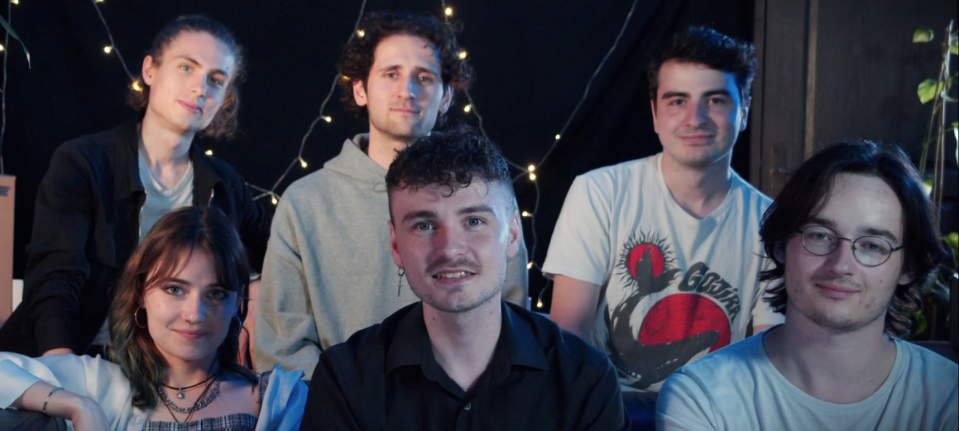
Is there anything you did in Silhouette that you'd like to explore more in future projects?
"We really loved working on our final year project. Creating a meaningful visual story from the very start as a team was a great experience. We had to find solutions in accordance with our capabilities and resources, but most importantly being able to explore and create our own artistic direction as a small group of artists was a very rewarding experience.
"We're so happy to see that people really enjoyed our short film. It's amazing to see so many people feel a connection to Claire's story. We would, of course, love to have the opportunity to initiate such a project again."
To learn more about VFX, join us at Vertex 2024, our live art event at London's Business Design Centre on 19 April. Join us to learn from professional artists working in film, games and VFX, including speakers from Pixar, nDreams and Maxon. Tickets for Vertex 2024 are on sale now.

